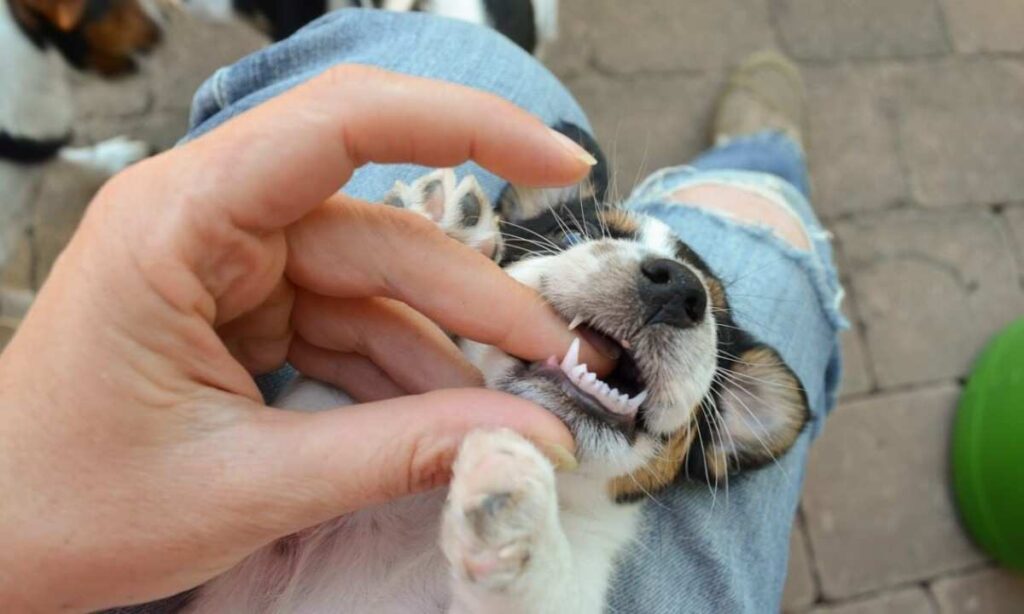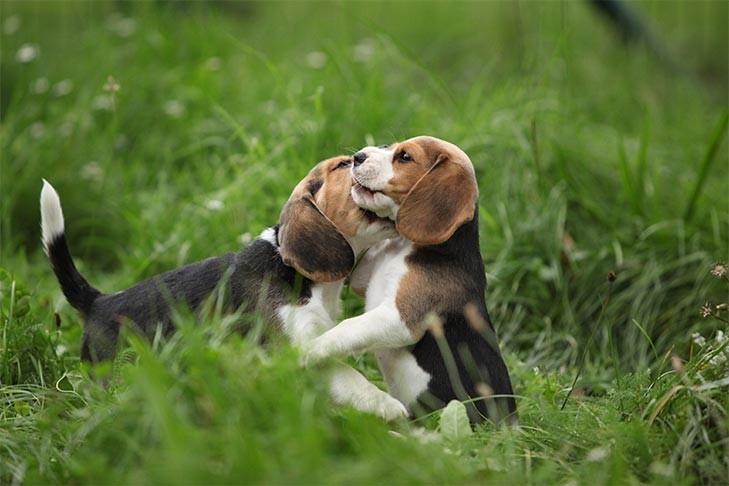
Determining the age of a puppy can be both a fascinating and essential task for anyone who has found or adopted a young dog.
Knowing a puppy’s age is crucial for providing appropriate care, training, and medical attention.
While it may seem challenging at first, there are several reliable methods to estimate a puppy’s age.
By examining their teeth, observing their behavior, and paying attention to physical characteristics, you can make an educated guess about how old your furry friend is.
This guide will explore various ways to determine a puppy’s age, providing insights into their development stages.
1. Examining the Teeth: The Most Reliable Indicator

One of the most accurate ways to determine a puppy’s age is by examining its teeth.
Puppies develop their teeth in a predictable sequence, and this progression offers valuable clues about their age.
0-3 weeks (Newborns)
Puppies are born without teeth.
During the first three weeks of life, they are entirely dependent on their mother for nourishment and care.
At this stage, they usually have their eyes closed and spend most of their time sleeping and nursing.
3-4 Weeks (The Appearance of Canine Teeth)
Around three to four weeks old, a puppy’s first teeth begin to emerge.
The canines, which are the sharp, pointed teeth located towards the front of the mouth, are typically the first to break through.
These teeth are essential for the puppy as they transition from milk to solid food.
4-5 Weeks (The First Sets of Incisors)
Between four and five weeks, the first sets of incisors, the small teeth located between the canines, start to appear.
These teeth are crucial for grasping and cutting food as the puppy begins to explore solid foods.
4-6 Weeks (The Premolars Begin to Emerge)
As the puppy continues to grow, the premolars, located just behind the canines, start to come in.
By six weeks, most puppies will have their first two sets of premolars.
6-8 Weeks (The Full Set of Baby Teeth)
By eight weeks of age, a puppy should have a complete set of baby teeth.
These teeth are typically sharp and spaced out as the puppy’s jaw grows. This stage is often when puppies are weaned from their mother’s milk and fully transition to solid food.
16 Weeks – 8 Months (The Transition to Permanent Teeth)
Between 16 weeks and eight months, a puppy will lose its baby teeth, which will be replaced by permanent adult teeth.
This process starts with the incisors and progresses to the back of the mouth.
By the time the puppy is around eight months old, all of its baby teeth should have been replaced by adult teeth.
2. Observing Behavior and Development

A puppy’s behavior and physical development also provide important clues about its age.
By closely monitoring how a puppy interacts with its environment and how it grows, you can further narrow down its age.
Newborn to 2 Weeks (Dependence on the Mother)
Very young puppies, up to two weeks old, are small and largely immobile.
They keep their eyes closed, do not move around much, and are entirely dependent on their mother for warmth and nutrition.
2-3 Weeks (Eyes Open and First Steps)
Around two to three weeks, puppies open their eyes for the first time and begin to explore their surroundings.
They start to take their first wobbly steps, moving out of the whelping box and showing curiosity about the world around them.
5-7 Weeks (Transition to Solid Food)
By five to seven weeks, puppies begin the process of weaning, transitioning from their mother’s milk to solid food.
During this time, they become more independent and begin to explore their environment with greater confidence.
8 Weeks (Increased Playfulness and Energy)
At around eight weeks, puppies become much more active and playful.
This stage is characterized by energetic play, exploration, and a lot of chewing as their baby teeth come in fully.
They are curious, constantly learning, and starting to develop social behaviors.
8-16 Weeks (Rapid Growth and Development)
Between eight and sixteen weeks, puppies go through a significant growth spurt.
Their bodies grow rapidly, and they begin to develop the coordination and strength needed for more complex physical activities.
During this period, their behavior is characterized by bursts of energy, followed by long naps.
6-12 Months (Adolescent Behavior)
As puppies approach six to twelve months of age, they enter adolescence.
This stage is marked by increased energy, curiosity, and sometimes testing boundaries.
Puppies may begin to exhibit behavioral issues, such as increased chewing, barking, and exploration.
They are also more likely to ignore previously learned commands as they become more independent.
12-24 Months (Slowing Growth and Maturity)
By the time a puppy reaches one to two years old, they have typically reached their full size, although larger breeds may continue to grow.
At this stage, they begin to mature and calm down, although they may still exhibit some playful, puppy-like behaviors.
Also Read: How to Tell the Age of a Turtle
3. Physical Characteristics and Gender-Specific Signs

In addition to teeth and behavior, there are physical traits and gender-specific signs that can help determine a puppy’s age.
Coat Changes
As puppies grow, their coats undergo changes.
Young puppies have soft, fluffy coats, which start to be replaced by denser, thicker adult fur as they age.
This transition can provide clues about a puppy’s age, particularly in breeds with distinct differences between their puppy and adult coats.
Genital Development
The development of a puppy’s reproductive organs can also offer age clues.
For example, male puppies’ testicles usually descend into the scrotum within the first seven weeks.
In female puppies, the onset of the first heat cycle, typically occurring between six to twenty-four months, is another indicator of age.
Vet Examination
If you’re still unsure about your puppy’s age, consulting a veterinarian is always a good idea.
A vet can assess the puppy’s physical characteristics, dental development, and overall health to provide a more accurate age estimate.
Final Thoughts
Determining the age of a puppy is a blend of science and observation.
By carefully examining their teeth, behavior, and physical traits, you can estimate their age with reasonable accuracy.
Understanding your puppy’s age is not only interesting but essential for providing the right care and ensuring their healthy development.
Whether you’re a new pet owner or have found a stray, these methods will help you better understand your furry companion’s needs and milestones as they grow.

Akash Singh is a finance enthusiast who shares valuable insights on various calculators.
